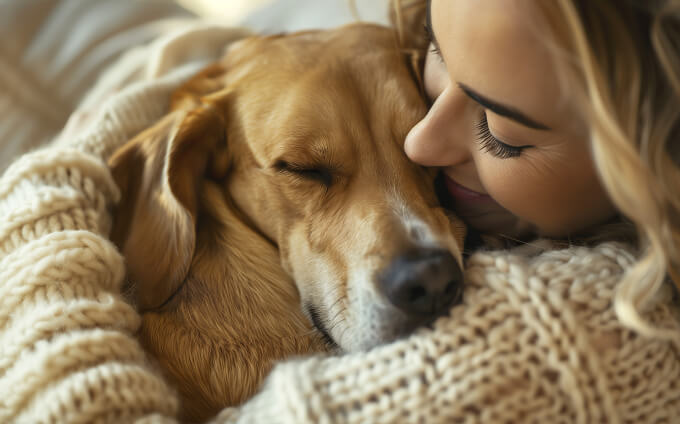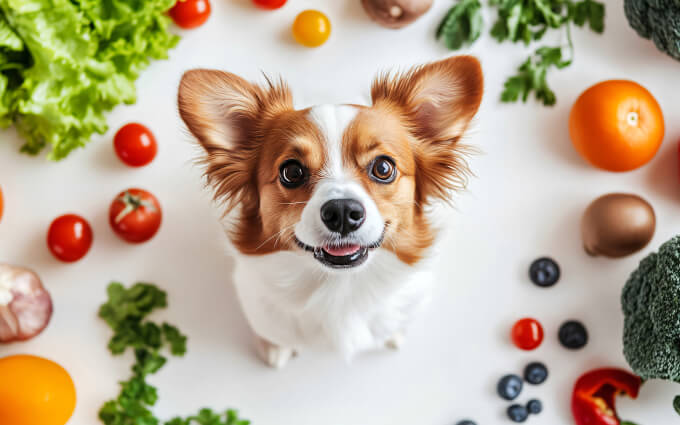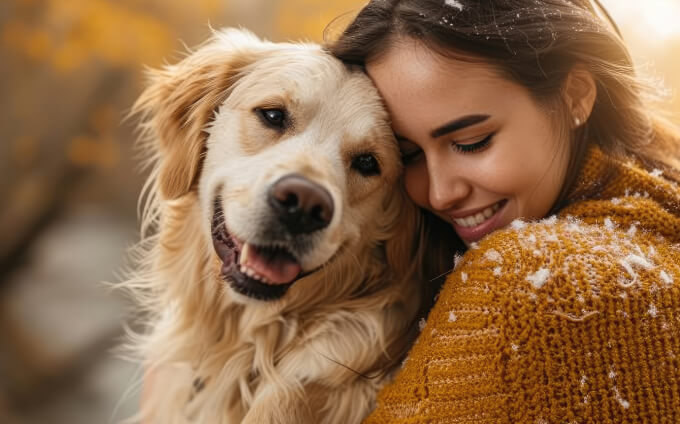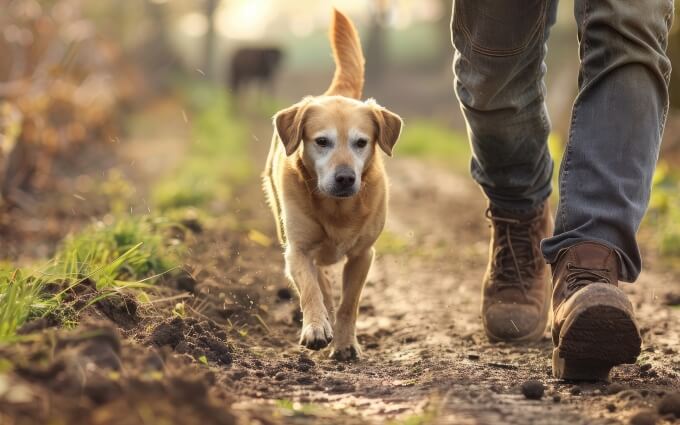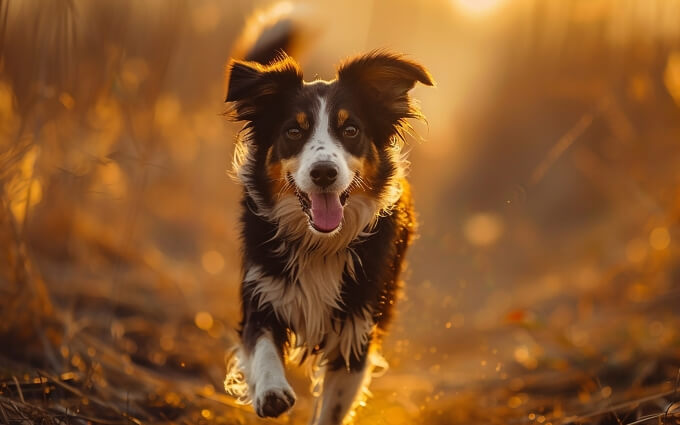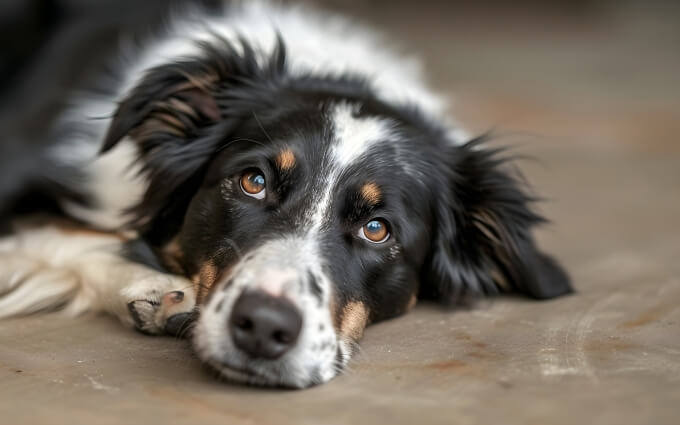- Home
- Tips & Tricks
- How to Train Your Dog to Give Paw
How to Train Your Dog to Give Paw
Teaching your dog to give paw is a fun and rewarding experience that strengthens your bond. This guide walks you through the process with tips, tricks, and plenty of paw-sitive reinforcement.

- 41
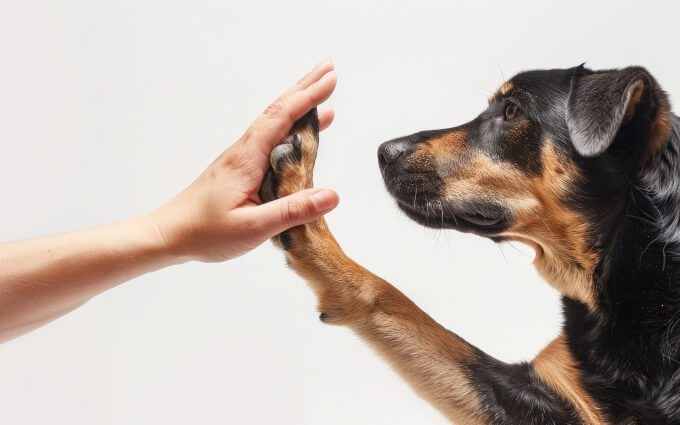
Why Teach Your Dog to Give Paw?
Training your dog to give paw isn't just a cute trick to impress your friends and family. It's an excellent way to engage your dog's mind, improve their obedience, and strengthen the bond between you two. Plus, it's a great confidence booster for your furry friend, as they feel a sense of accomplishment with each successful command.
Not only does it provide mental stimulation, but it also helps in situations where you need your dog to offer their paw, such as during grooming or vet visits. Ultimately, it's a simple yet effective way to enhance your dog's overall training and well-being.
Getting Started: What You'll Need
Before you dive into training, gather a few essential items:
- Treats:Choose small, tasty treats that your dog loves. These will be the rewards for a job well done.
- Clicker:If you use clicker training, have your clicker handy. It helps mark the exact moment your dog performs the desired action.
- Patience:Training takes time and consistency. Be prepared to practice regularly and stay positive.
Now that you're equipped, let's get started!
Step-by-Step Guide to Teaching 'Give Paw'
Step 1: Get Your Dog's Attention
Start by having your dog sit in front of you. Hold a treat in your hand and let them see and sniff it, but don't give it to them just yet. This will get their attention and make them eager to earn the reward.
Step 2: Lure with a Treat
Place the treat in your closed fist and hold it near your dog's paw. Most dogs will naturally try to paw at your hand to get the treat. As soon as they lift their paw, even slightly, praise them and open your hand to give the treat.
Step 3: Add the Command
Once your dog starts to lift their paw consistently, introduce the verbal command 'Paw' or 'Shake'. Say the command clearly each time they lift their paw, followed by immediate praise and a treat.
Step 4: Practice Makes Perfect
Repeat this process several times a day in short, focused sessions. Gradually, your dog will begin to associate the verbal command with the action. Make sure to always use positive reinforcement and stay patient.
Common Challenges and Solutions
Challenge: My Dog Isn't Interested
Some dogs might not be immediately interested in the treat or the training. Try using higher-value treats, like small pieces of chicken or cheese. Ensure the training environment is free from distractions so your dog can focus.
Challenge: My Dog Uses the Wrong Paw
If your dog offers the wrong paw, gently guide their other paw into your hand while giving the command. Over time, they'll learn to associate the correct paw with the action.
Challenge: Inconsistent Performance
Consistency is key in training. Practice regularly and maintain the same command and reward system. If your dog seems confused, go back a step and reinforce the basics before moving forward again.
Advanced Tips for Mastering 'Give Paw'
Once your dog has mastered the basic 'give paw' command, you can introduce variations and challenges to keep their skills sharp and impressive.
- Switching Paws:Teach your dog to offer both paws on command by using separate cues for each paw, like 'left paw' and 'right paw'.
- Incorporating Tricks:Combine 'give paw' with other tricks, such as 'high five' or 'wave', to create a sequence of actions that are sure to wow any audience.
- Using Props:Introduce a prop, like a small box or a platform, for your dog to place their paw on. This adds a new layer of complexity and fun to the training.
Maintaining the Skill
Once your dog has learned to give paw, it's important to keep practicing to maintain the skill. Regular training sessions, even if they're just a few minutes a day, will help keep the behavior fresh in your dog's mind.
Incorporate the command into daily routines, like during playtime or before meals, to keep it engaging and fun for your dog. Consistency and positive reinforcement will ensure your dog remains eager to show off their 'give paw' skill at any opportunity.
Frequently Asked Questions about training a dog to give paw
How do I teach my dog to give paw?
Hold a treat in your closed hand, wait for your dog to touch your hand with its paw, then reward immediately.
How long does it take for a dog to learn paw?
Most dogs learn within a few short training sessions, depending on their age, focus, and motivation.
Can puppies learn to give paw?
Yes, puppies can learn this trick quickly as long as the training is fun, positive, and consistent.
Do I need a clicker to train my dog to give paw?
No, a clicker is optional, but it can make timing clearer and speed up the learning process.
Why should I teach my dog to give paw?
It's a fun bonding trick, helps with obedience, and keeps your dog mentally stimulated.
- 41
 Marcin Solgaard
Marcin Solgaard
Marcin is a true dog enthusiast! He is always seen with his 9-year-old boxer by his side. Marcin believes that dogs thrive on love, fun and positive experiences. On their daily adventures, people often stop Marcin to ask how his boxer is so happy and well-behaved. He happily shares tips on dog behavior and fun activities to create a happy and harmonious life with your dog.
-
Dog Behavior
 Does My Dog Know I Care About It?
Does My Dog Know I Care About It?Discover the ways your dog shows it knows you care and how you can reinforce that loving bond through simple actions and daily interactions.
 Cassandra DalgaardAug 05, 202444
Cassandra DalgaardAug 05, 202444 -
Food & Nutrition
 The Best Foods to Boost Your Dog's Immune System
The Best Foods to Boost Your Dog's Immune SystemTo keep your dog healthy and resilient, fueling their immune system with the right foods is key. In this post, we'll cover the top nutrient-packed foods that can give your dog's immune system the support it needs, helping them fend off illness and stay energetic.
 Marcin SolgaardOct 04, 20249
Marcin SolgaardOct 04, 20249 -
Dog health
 Which Emotions Do Dogs Actually Experience? Understanding Your Dog's Emotions
Which Emotions Do Dogs Actually Experience? Understanding Your Dog's EmotionsDogs experience a variety of basic emotions similar to those of a young child. Learn about the emotions your dog truly feels, how they express them, and what it means for your relationship.
 Cassandra DalgaardJul 30, 202478
Cassandra DalgaardJul 30, 202478 -
Tips & Tricks
 How to Train Your Dog to Walk Off-Leash
How to Train Your Dog to Walk Off-LeashThis guide will walk you through everything you need to know, from essential commands to mastering off-leash walks even in distracting environments
 Marcin SolgaardJul 02, 202451
Marcin SolgaardJul 02, 202451 -
Tips & Tricks
 How to Teach Your Dog to Come When Called
How to Teach Your Dog to Come When CalledThis guide walks you through the process, from selecting the right command to dealing with distractions, ensuring a strong recall every time.
 Marcin SolgaardJul 10, 202448
Marcin SolgaardJul 10, 202448 -
Dog Behavior
 Why Your Dog Ignores You and How to Change It
Why Your Dog Ignores You and How to Change ItIs your dog ignoring you? Explore the reasons behind this behavior and actionable steps to bring back the focus, from training techniques to environmental adjustments.
 Marcin SolgaardJul 16, 202439
Marcin SolgaardJul 16, 202439 -
Food & Nutrition
 How to Choose the Right Diet for Your Allergic Dog
How to Choose the Right Diet for Your Allergic DogFind out how to select the perfect diet for your dog with allergies. Learn about elimination diets, hypoallergenic foods, and the best ingredients to keep your furry friend healthy and happy.
 Marcin SolgaardJun 09, 202427
Marcin SolgaardJun 09, 202427 -
Tips & Tricks
 How to Keep Your Dog Off the Furniture
How to Keep Your Dog Off the FurnitureEnsuring your dog stays off the furniture can be a challenge, but with the right techniques and consistency, you can create a pet-friendly environment that respects your space.
 Marcin SolgaardJun 24, 202439
Marcin SolgaardJun 24, 202439 -
Dog Behavior
 Why Does My Dog Put Its Head on Me? Understanding the Behavior
Why Does My Dog Put Its Head on Me? Understanding the BehaviorEver wondered why your dog puts its head on you? This guide dives into the reasons behind this endearing behavior, from seeking comfort to showing love.
 Michelle TorringAug 03, 202428
Michelle TorringAug 03, 202428 -
Tips & Tricks
 Are You Ready for Life with a Dog? Everything You Need to Know
Are You Ready for Life with a Dog? Everything You Need to KnowThis guide helps you determine if you're ready for a dog by exploring the responsibilities, financial requirements, and lifestyle changes necessary for successful dog ownership.
 Marcin SolgaardJul 31, 202433
Marcin SolgaardJul 31, 202433

